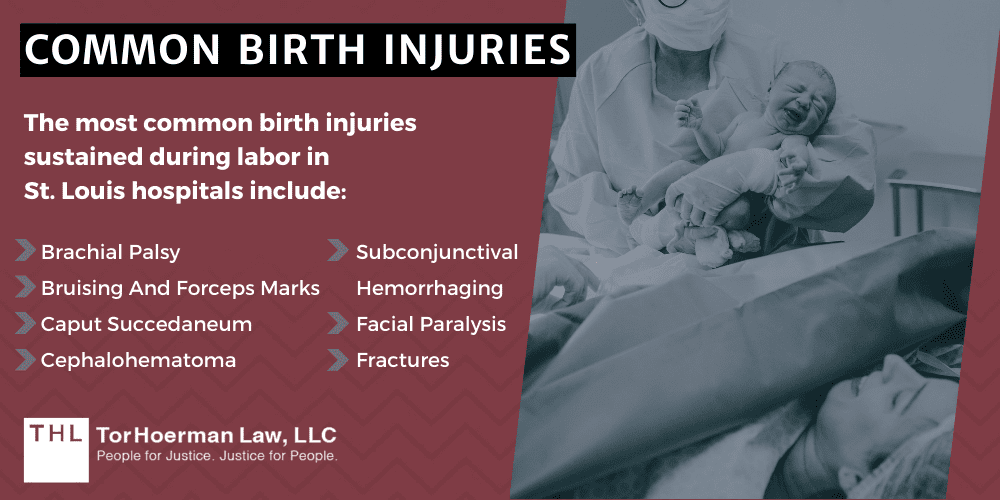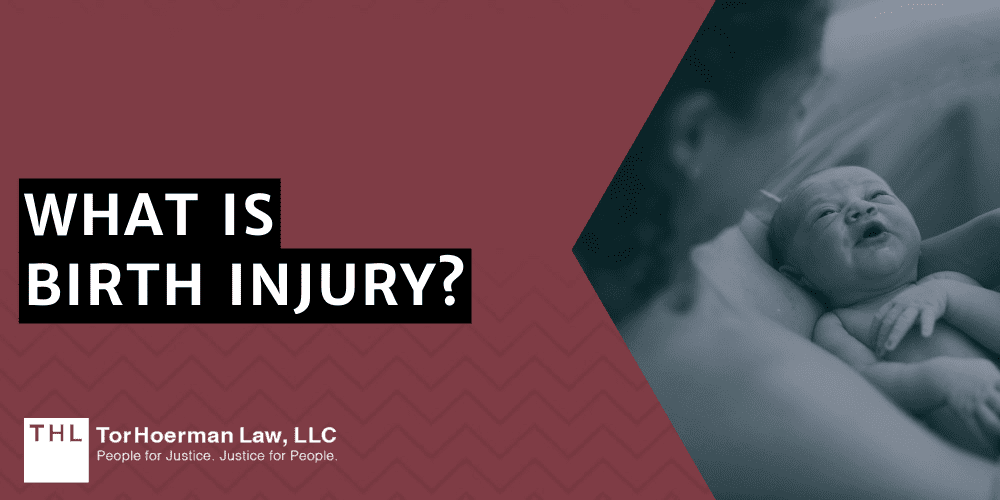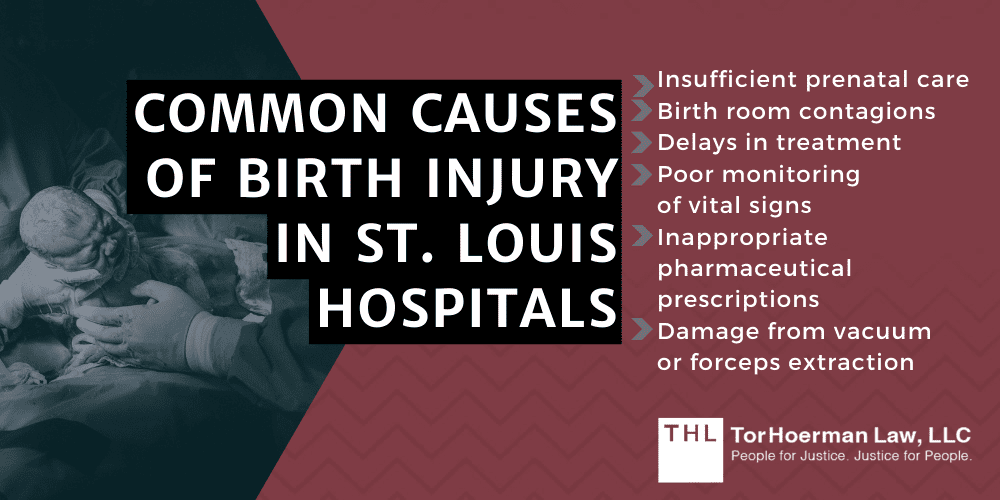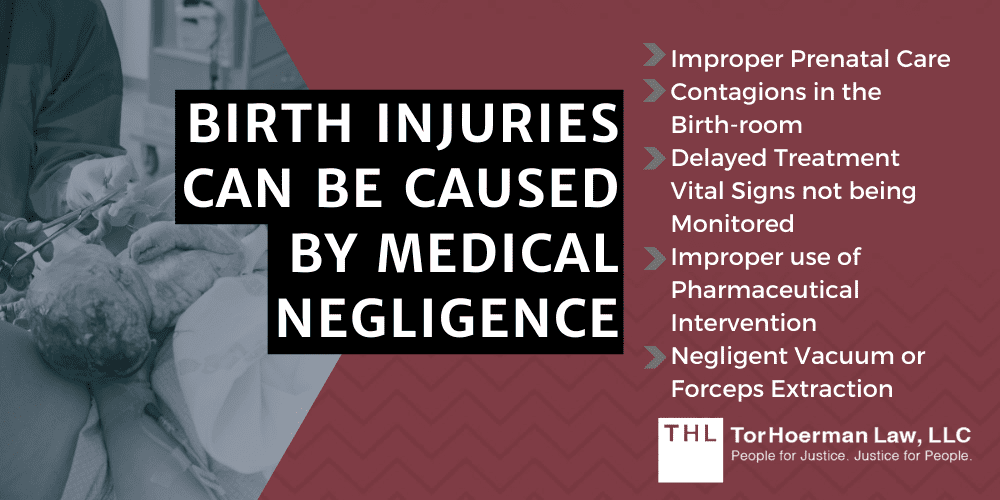
The most common birth injuries sustained during labor in St. Louis hospitals include:
Brachial Palsy
Brachial palsy is caused by damage to the brachial plexus, the network of nerves that control the hands and arms.
A brachial plexus injury affects a child’s ability to flex or rotate the injured arm.
Brachial palsy can be treated soon after birth with physical therapies and exercises, but the injury can be permanent if the nerves are damaged.
Bruising and Forceps Marks
Newborns delivered with forceps or by vacuum extraction can suffer from marks, bruises, and lacerations on their faces and body.
Bruising can also occur naturally from the child coming in contact with the birth canal or the mother’s tissues and pelvic bones.
Caput Succedaneum
Caput Succedaneum refers to swelling on the soft tissue of the scalp.
Caput is most likely to develop during vacuum extraction, and the swelling is often paired with scalp bruising.
Cephalohematoma
Cephalohematoma refers to bleeding between the skull bones and their fibrous outer layers.
Cephalohematoma is usually noticeable within a few hours of a child’s birth as a lump on his or her head.
The injury typically heals naturally, but newborns can develop jaundice in instances of severe bleeding.
Facial Paralysis
Excessive pressure on a newborn’s face during birth can cause nerve damage and facial paralysis.
This can result naturally or from inadequate forceps or vacuum use.
Bruised nerves typically heal within a few weeks, but in cases where facial nerves are torn, surgery is often required.
Fractures
Newborn’s clavicles and collarbones are susceptible to fracturing during delivery.
The bones are likely to break when there are problems delivering the baby’s shoulder or in instances of breech delivery.
Subconjunctival Hemorrhaging
Bleeding in the eye’s outer layer is referred to as subconjunctival hemorrhaging.
This injury is common in newborns and appears as a bright red band in the white section of the child’s eye.
The hemorrhaging can cause eye damage, but it typically heals within seven to ten days.






















